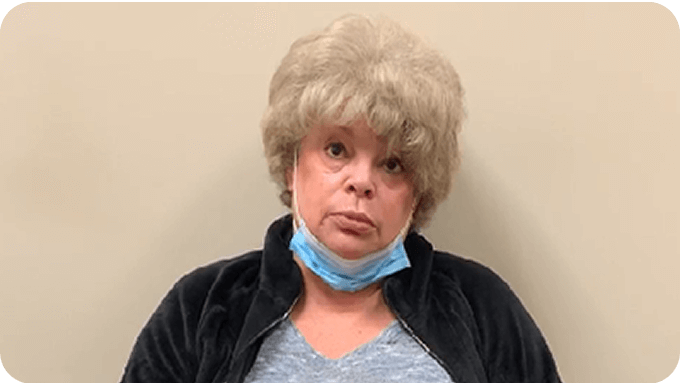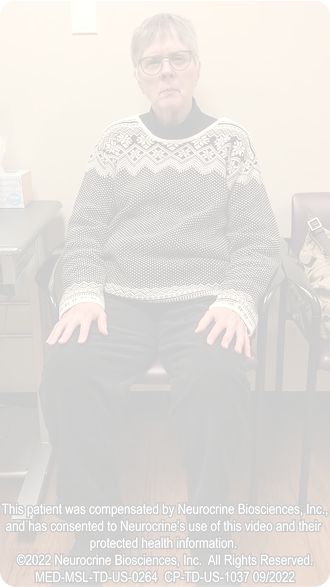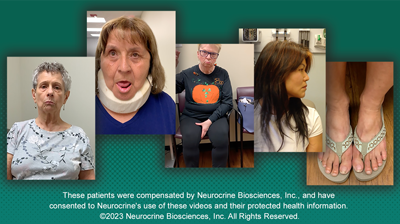

~3 mins
•Sep 2022
70-Year-Old Woman With Tardive Dyskinesia Displaying Oro-Buccal-Lingual Stereotypy, Toe Tapping, and Finger Movements

This video features a brief clip from an HCP-patient interaction and is not a complete formal exam.
The completed portions of the MIND-TD Questionnaire that accompany this video are taken from sections of the questionnaire and do not represent the screening tool in its entirety.
The MIND-TD Questionnaire is intended to facilitate a dialogue about abnormal movements with patients at risk for TD. Diagnosis of TD should be based on the patient’s medical history, their symptoms, and the clinician’s best judgment.


~3 mins
•Sep 2022
70-Year-Old Woman With Tardive Dyskinesia Displaying Oro-Buccal-Lingual Stereotypy, Toe Tapping, and Finger Movements


10+ mins
•Oct 2021


~5 mins
•May 2024